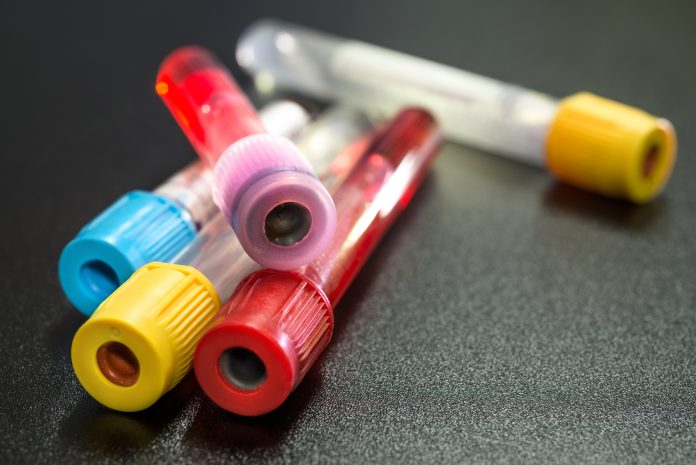Here, several experts from the International Society for Biological and Environmental Repositories, share their views on precision medicine research and biobanking in China
Biobanking is increasingly recognised as a foundational activity underpinning scientific breakthrough in precision medicine and leading to new treatments. (1) Biobanking is a collective term which describes the process by which biological samples (bodily fluid or tissue) and associated data are collected, annotated, stored and redistributed for future research used to improve our understanding of health and disease. Other information, such as height, weight and questions about things that may have a bearing on health (e.g. family history and lifestyle) may also be recorded at the same time, to provide the context for the samples. Often samples are kept for several years so that long term future research can be carried out.
The last two decades have seen sustained growth in the creation of biobanks as supporting infrastructure to precision medicine research and as such, biobanks now exist in almost every country, university and medical research institute/hospital. In particular, biobanking in China has undergone an explosive expansion during the last 15 years as the country has invested heavily in upgrading its core research infrastructure and capacity.
Precision medicine research is based on the analysis of samples combined with detailed clinical data – and because the associations are often weak, samples are needed in large quantities. The implication is clear: if more, well-characterised, high-quality samples are available through biobanks, the faster research will advance and impact upon the faster delivery of precision healthcare today. Thus, biobanking is a key element to the success of future treatments as biobanks are now being relied upon to standardise tissue collection for improved science quality and to actually drive research. This richness of collected information allows researchers to track the health of study participants in detail by looking at their past and future medical records, provided people have permitted them to do so.
Biobanking in China
China remains the country with the largest population globally and has to respond to intense population health pressures now and in the future. Therefore, the Chinese authorities attach great importance to the development of biobanks as central infrastructures in support of precision medicine research. The first biobanking project in China was launched in 1994 by the Chinese Academy of Sciences for the storage of large numbers of immortalised cell lines from Chinese ethnic groups. (2) In July 2003, the ‘National Infrastructure of Chinese Genetic Resources’ (NICGR) was initiated as an important component of the National Science and Technology Infrastructure Program by the Ministry of Science and Technology (MoST) and the resource became open for access through the internet in 2007. Subsequently, the MoST initiated a project called ‘Standardized Organization, Integration and Shared Pilot of Genetic Resources for Significant Diseases’ (2005–2007), aiming to integrate genetic resources of selected, prioritised diseases. Importantly, this project set up the sharing framework for samples and allowed further biobanking initiatives to materialise.
As is the case for other major projects, such as its high- speed rail system, the Chinese Government committed a large amount of funding to biobanking and precision medicine research initiatives, as the national research needs and capacities continued growing exponentially in the last two decades. In 2011, the Mega-projects of Science Research were published as part of the 10th Five-Year Plan, where the construction of large human biobanks and a sharing service system became a key goal in supporting further healthcare research. (3)
Beijing, Shanghai, Shenzhen and Guangzhou remain the leading locations for the construction and development of Chinese biobanks, as many biomedical research centres/institutes, professional associations and clinical facilities are located in these cities. These include, for example, the Biobank Branch, China Medicinal Biotech Association (BBCMBA), the Shanghai Clinical Research Center and many others. However, other cities with strong higher education institutions and research healthcare centres, such as Changsha, Wuhan, Chongqing and others, have also created their own local biobanking hubs in recent years.
Future prospects
In terms of recent developments, one of the largest and most modern biobanks globally is within the China National GeneBank (CNGB), approved and funded by the Chinese government to a cost of over $1 billion and opened in 2016. CNGB is a public, non-profit and open to international collaborations key infrastructure. The “Three Banks and Two Platforms” structure integrate the ability to “read, write and store” massive biological resources. As such, CNGB operates as a vertically integrated unit supporting multiple research purposes, facilitating advanced genomics R&D and technology transfer to industrial applications, including precision medicine, agriculture, marine sciences and microbial applications. (4)
The investments made by the European Union (EU) and individual European countries are the most fully developed in terms of biobanking networks and recognition of the return on investment into research infrastructure in general. In China, there is certainly a recognition of the importance of investing in research infrastructure and biobanking in particular, as noted above concerning government funding for biobanking. However, the field is only now reaching maturity in terms of implementing the best practices and ISO standards in relation to biobanking. (5)
The rapid growth of biobanking in China means that there is still a demand for expertise and advice concerning best practices, quality management, patient privacy, intellectual property, sample and data sharing and other challenges that are more fully developed for example, in the U.S. and Europe. This was highlighted further in May 2019, when China hosted the 20th Anniversary Annual meeting of the International Society for Biological and Environmental Repositories (ISBER) in Shanghai. Chinese biobanking has laid a solid foundation to promote the development of life science and translational medicine in the future, intending to improve the prevention and treatment of major diseases. Although there are universal challenges that Chinese biobankers are confronting, such as the underuse of samples, long-term sustainability of such infrastructures, ethical and legal challenges and the interoperability of data, the potential significant advances in translational medical research cannot be overestimated.
References
(1) Biobanking is changing the world. Jayshree Pandya, Aug 2019. Forbes.com https://www.forbes.com/sites/cognitiveworld/2019/08/12/biobanking-is-changing-the-world/
(2) Chu JY, Xu JJ, Fu SB, et al. The establishment of the immortalize cell bank of different Chinese ethnic groups. Intl J Genetics 2008; 31:241–247.
(3) Gan R, Wang H, Song Y, et al. Chinese Biobanking Initiatives. Biopreserv. Biobank. 2015; 13: 4–7.
(4) China National GeneBank; www.cngb.org
(5) Simeon-Dubach D and Kozlakidis Z. (2018) New Standards and Updated Best Practices Will Give Modern Biobanking a Boost in Professionalism. Biopreserv Biobank; 16(1):1-2.
Disclaimer
Where authors are identified as personnel of the International Agency for Research on Cancer/WHO, the authors alone are responsible for the views expressed in this article and they do not necessarily represent the decisions, policy or views of the International Agency for Research on Cancer/WHO.











